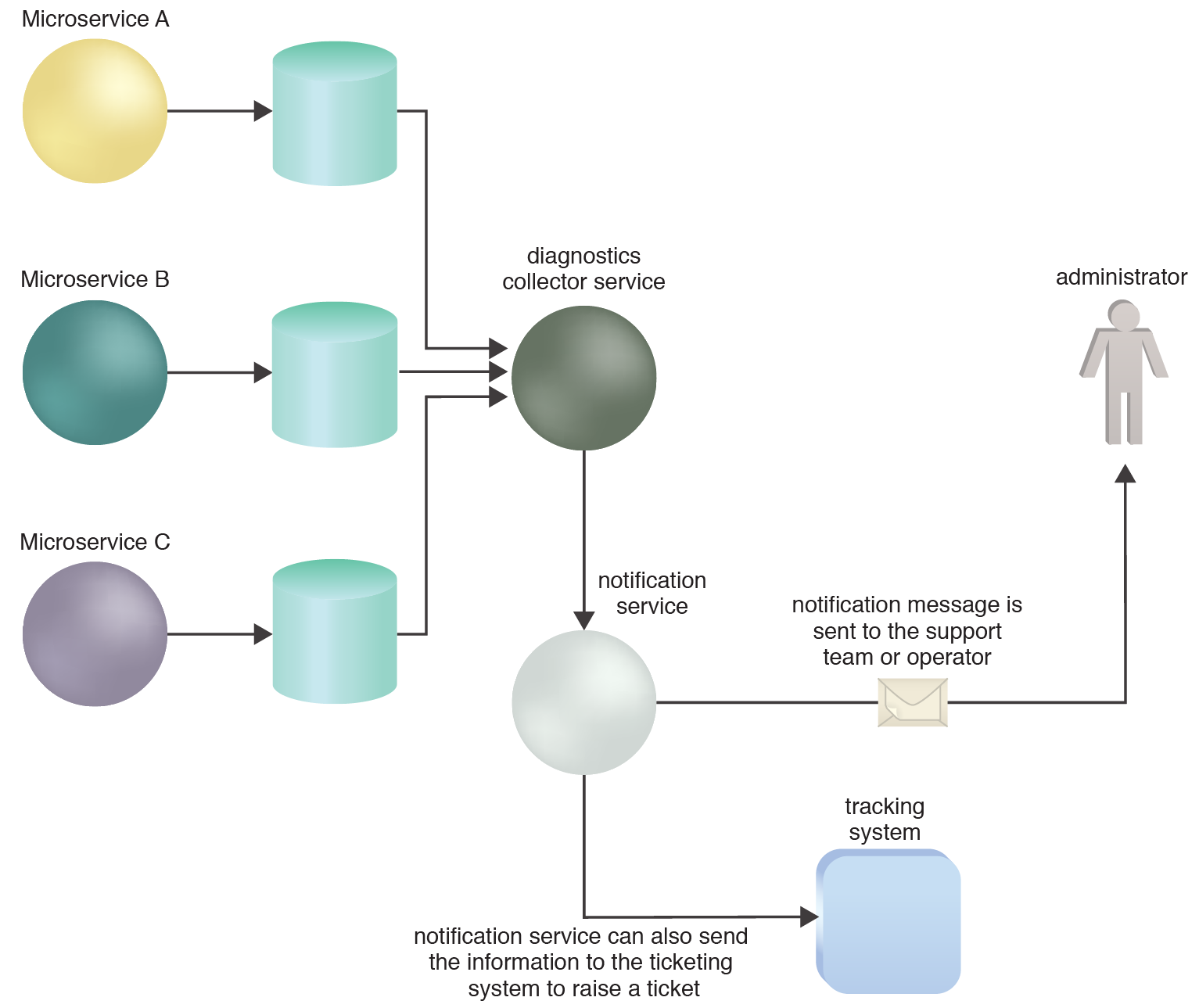Microservice and Containerization Patterns > Utility Patterns > Distributed Diagnostics
Distributed Diagnostics (Erl, Naserpour)
How can microservice diagnostics data be more efficiently acted upon in response to problem conditions?

Problem
Solution
Application
A diagnostic collector service agent is introduced to intercept diagnostics data before it arrives in the persistent centralized diagnostic system. When data of concern is encountered, the diagnostic collector service has the opportunity to invoke a notification system in order to immediately notify administrators of the concern.

The notification service is responsible for raising an alert by sending a message to the support team according to the event or error that occurs, or sending the information to the ticketing system to raise a ticket.
This pattern can be applied together with the Pre-Defined Data View pattern, as explained in the complete pattern description.
This pattern is covered in Module 10: Advanced Microservice Architecture & Containerization..
For more information regarding microservice and containerization courses and accreditation,
visit the Microservice Architect Certification program page..
